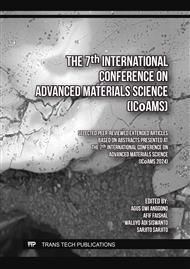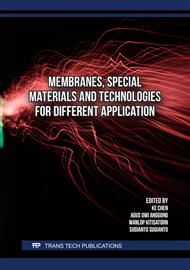p.49
p.55
p.61
p.67
p.75
p.81
p.95
p.101
p.109
Influence of Repeated Wetting-Drying Process on Strength of Cement Admixed Soil Improved by Natural Liquid Latex Rubber
Abstract:
This study investigated the impact of wet-dry cycling on the unconfined compressive strength of compacted cement-soil mixed with latex rubber. The objective was to simulate the fluctuating moisture conditions in the soil caused by alternating rainy and dry seasons over multiple years. The experiments compared cement-soil samples to rubber-cement-soil samples. The amount of cement used was equivalent to 8 percent of the dry soil mass, while the latex emulsion content was 8 percent by cement mass. The wet-dry cycling process was performed on the samples cured for 28 days. The results indicated that the rubber-cemnet-soil samples consistently exhibited enhanced compressive strength compared to the cement-soil samples. During the initial two cycles of the wet-dry process, the rubber-cement-soil samples demonstrated a greater rate of compressive strength improvement than the cement-soil samples. This indicates that the rubber particles contribute to strengthening the soil during the wetting-drying process. It is worth noting that the rate of compressive strength increase for both sample sets becomes comparable after the second cycle of the wetting-drying process.
Info:
Periodical:
Pages:
95-100
Citation:
Online since:
December 2024
Authors:
Price:
Сopyright:
© 2024 Trans Tech Publications Ltd. All Rights Reserved
Share:
Citation:



